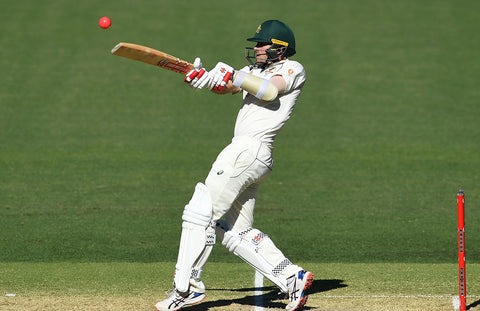Cricket batting, at its heart, is a thrilling dance between precision and power. The moment a batter steps onto the crease, bat in hand, facing a fast-approaching ball, they become the focal point of the game. For aspiring cricketers, learning to bat well isn’t just about hitting the ball; it’s about understanding technique, building confidence, and developing a strategic mindset. It can seem overwhelming at first, with so many shots and defensive moves to master.
But don’t worry! This article is your simple guide to understanding the essential batting tips that will help you lay a strong foundation for your cricket journey. We’ll break down crucial aspects from your stance to shot selection, focusing on clear, easy-to-understand advice that you can start practicing today. Get ready to refine your technique, boost your confidence, and begin to truly master the art of batting!
Why Batting is Key: The Batter’s Role
In cricket, the batting team’s primary goal is to score as many runs as possible. As a batter, you are the one responsible for making those runs. Your role is vital:
- Score Runs: Every run scored puts your team closer to victory.
- Protect Your Wicket: Staying “not out” means you can keep scoring. Losing your wicket too easily puts pressure on your teammates.
- Control the Game: Good batting can dictate the pace of the match, frustrate the bowlers, and build momentum for your team.
It’s a game of offense and defense, requiring skill, patience, and quick reactions.
Your Batting Basics: The Foundation
Before you even think about hitting a six, mastering the basics is crucial. These foundational elements ensure you’re in the best position to react to the ball.
1. The Stance: Your Starting Point
Your stance is where it all begins. It needs to be balanced, comfortable, and ready for action.
- How to do it: Stand with your feet about shoulder-width apart, parallel to the crease (the white line in front of the wickets). Your front shoulder should point towards the bowler. Keep your knees slightly bent – don’t lock them. Hold the bat comfortably, pointing towards the slips (a fielding position on the leg side).
- Why it’s important: A balanced stance allows you to move quickly in any direction (forward or back) and helps you keep your head still, which is essential for watching the ball.
- Beginner Tip: Practice getting into your stance in front of a mirror. Focus on feeling balanced and relaxed, not stiff.
2. The Grip: Holding Your Power
How you hold the bat affects your control and power.
- How to do it: Use both hands. Your bottom hand (the one closest to the blade of the bat) should grip the handle more lightly, allowing for wrist movement. Your top hand (the one higher up the handle) should grip more firmly, providing control and stability. The “V” shapes formed by your thumbs and forefingers on both hands should align and point down the middle of the bat’s edge.
- Why it’s important: A good grip provides control over the bat for defensive shots and allows for powerful wrist movement for attacking shots.
- Beginner Tip: Don’t grip the bat too tightly. A relaxed grip allows for better flow and responsiveness.
3. Head Still & Eyes on the Ball: The Golden Rule
This is perhaps the most important batting tip, no matter your skill level.
- How to do it: As the bowler runs in, keep your head absolutely still and your eyes focused intensely on the ball from the moment it leaves the bowler’s hand until it makes contact with your bat (or you decide not to hit it).
- Why it’s important: A still head ensures your eyes are level and gives you the best chance to judge the ball’s line, length, and speed accurately. If your head moves, your perception of the ball changes, leading to mistakes.
- Beginner Tip: Practice this without a ball first. Just stand in your stance and visually track an imaginary ball coming towards you.
Essential Batting Techniques: Your Shots and Defense
Once the basics are solid, you can start working on the movements that allow you to score and survive.
1. Front Foot Defense: Your Shield
This is your primary defensive shot, crucial for protecting your wicket against balls bowled short or straight.
- How to do it: Take a small step forward with your front foot, bringing your head in line with the ball. Present the full face of the bat straight down, covering the wickets. Keep your hands soft and let the bat “meet” the ball gently, deflecting it downwards.
- Why it’s important: A solid front foot defense prevents the ball from hitting your wickets or your pads (which could lead to an LBW dismissal). It buys you time and confidence.
- Beginner Tip: Practice gently “pushing” the bat down towards an imaginary ball. Focus on keeping your bat straight and your head over the ball.
2. Back Foot Defense: Stepping Back
This is for balls that are bowled shorter and bounce higher, often aimed at your body or outside the off stump.
- How to do it: Take a small step back with your back foot, transferring your weight onto it. Bring the bat down firmly, straight and close to your body, defending the ball downwards.
- Why it’s important: It allows you to deal with shorter, faster balls effectively, getting your body out of the way and protecting your stumps.
- Beginner Tip: Practice the backward step first, ensuring you maintain balance before adding the bat movement.
3. Driving (Front Foot Drives): Scoring Runs with Style
Drives are among the most elegant and effective scoring shots in cricket, often hit along the ground.
- How to do it: For an on-drive (straight down the ground), off-drive (towards extra cover), or cover drive (through the covers), take a controlled step forward with your front foot, aligning your head with the ball. Swing the bat through in a full, flowing arc, keeping your head over the ball and aiming to hit it along the ground. Finish with a high follow-through.
- Why it’s important: Drives allow you to score runs off fuller balls and put pressure on the bowler. They demonstrate good technique and timing.
- Beginner Tip: Practice shadow batting (without a ball) to perfect the full arc and follow-through. Focus on hitting “through the line” of the ball.
4. Cutting & Pulling (Back Foot Shots): Playing Short Balls
These are more aggressive shots played off the back foot, typically for balls that are bowled shorter.
- The Cut Shot: For a ball that bounces outside your off stump. Step back and across with your back foot, getting out of the line of the ball, and then “cut” the ball square (at a right angle) through the offside field using a horizontal bat swing.
- The Pull Shot: For a short ball aimed at your body or leg stump. Step back and across, getting your body out of the way, and “pull” the ball with a horizontal bat swing towards the leg side.
- Why they’re important: These shots allow you to score quickly off shorter, attacking balls that might otherwise be difficult to defend.
- Beginner Tip: These require good judgment and quick footwork. Practice the footwork first without the ball. Understand when to choose to cut or pull.
5. Timing Over Power: The Batter’s Secret
Many aspiring batters try to hit the ball as hard as possible. However, cricket is often about timing.
- How it helps: Even a gentle push with perfect timing can send the ball to the boundary, or allow you to effortlessly run for a single. Trying to hit too hard often leads to mistakes.
- Practical advice: Focus on watching the ball closely, getting into a good position, and letting the bat meet the ball in the “sweet spot” (the middle of the bat). The bat does the work.
- Beginner Tip: Practice soft hands drills, where you try to just deflect the ball or guide it into gaps without hitting hard.
Beyond Technique: The Mental Game and Practice
Batting isn’t just physical; it’s highly mental.
1. Patience: Your Best Friend at the Crease
Cricket is a game of patience. Not every ball is meant to be hit for runs.
- How it helps: Being patient allows you to wait for the right ball to hit, avoid taking unnecessary risks, and build your innings slowly but surely.
- Practical advice: Develop a strong defense. Leave balls that are outside your hitting zone. Don’t feel pressured to score off every delivery.
- Beginner Tip: Set mini-goals, like surviving the first five overs without getting out.
2. Practice, Practice, Practice!
No amount of reading can replace actual practice.
- How to do it:
- Shadow Batting: Practice your stance, grip, and various shots without a ball. Focus on smooth, flowing movements.
- Drills: Work with a coach or friend on specific drills for footwork, defense, and shot execution.
- Net Sessions: Batting in nets against bowlers is invaluable for real-time practice.
- Why it’s important: Repetition builds muscle memory and confidence, making your actions feel natural in a match.
- Beginner Tip: Start with 15-20 minutes of dedicated shadow batting daily. This can be done anywhere.
3. Know Your Game: Strengths & Weaknesses
Understand what you’re good at and what you need to improve.
- How it helps: Play to your strengths (e.g., if you’re good at driving, look for those opportunities). Work on your weaknesses to become a more complete batter.
- Practical advice: Reflect after practice sessions or matches. Ask for feedback from coaches.
- Beginner Tip: Identify one shot you feel most comfortable playing and one area you want to improve each week.
Conclusion: Your Journey to Batting Excellence
Cricket batting is a challenging yet incredibly rewarding art form. It’s a test of skill, patience, and mental fortitude. By focusing on the essential basics – a solid stance, a confident grip, a still head with eyes on the ball – and then gradually mastering key techniques like defense, drives, cuts, and pulls, you’ll build a strong foundation.
Remember, consistency in practice and developing patience are just as vital as technique. Every great batter started as a beginner. So, lace up your boots, pick up your bat, and step onto the crease with confidence. Your journey to batting excellence in cricket starts today!





Leave a Reply